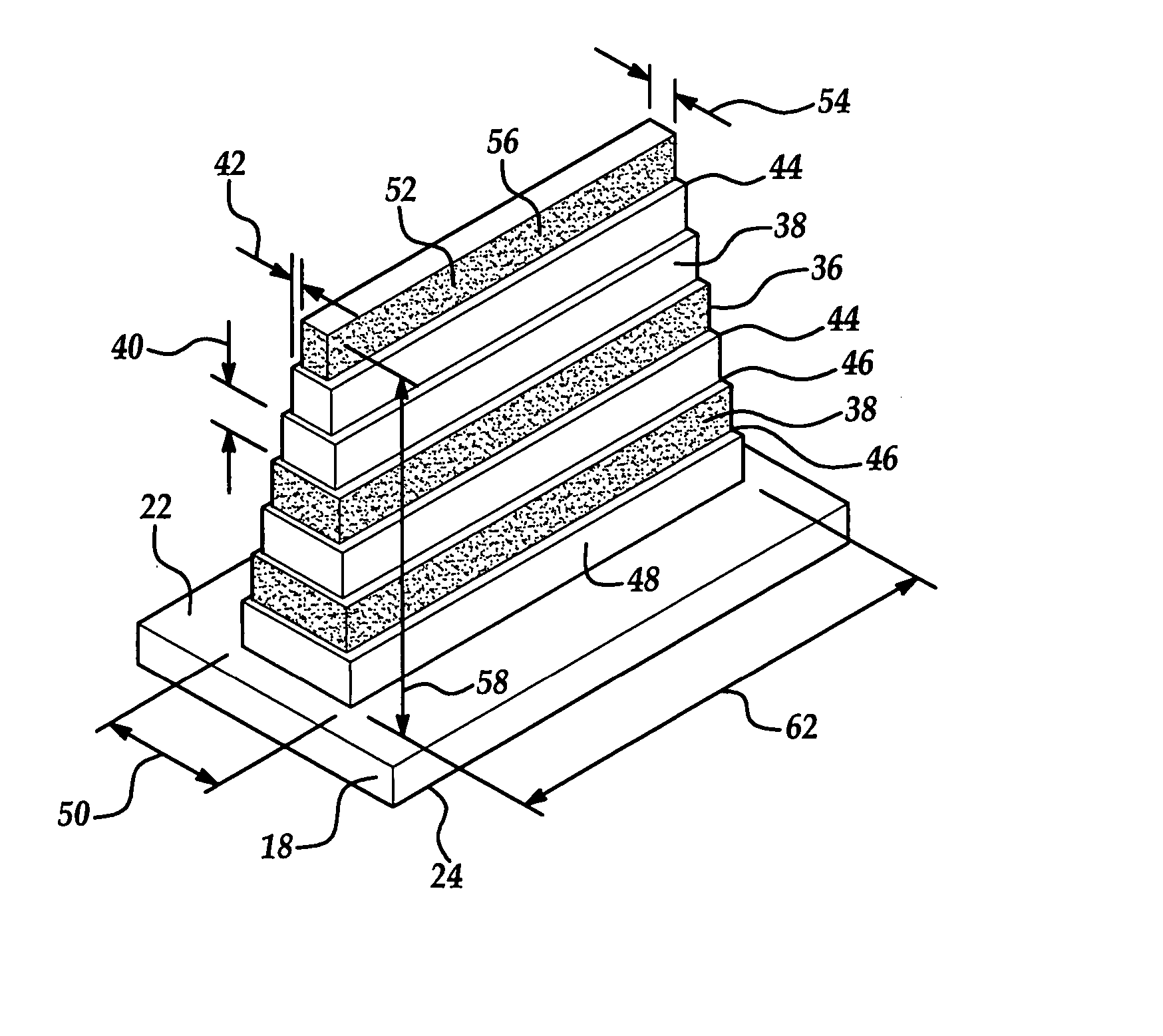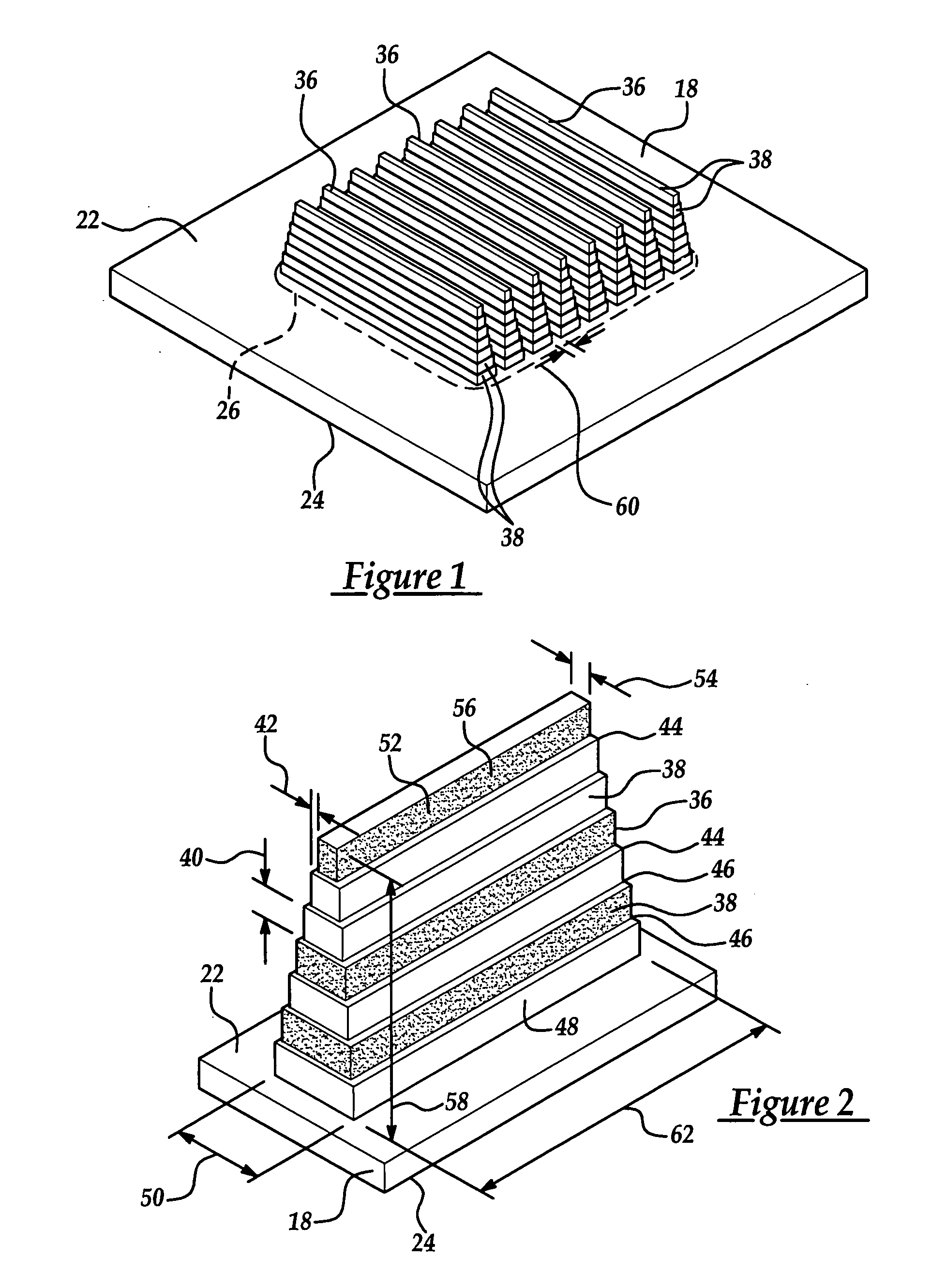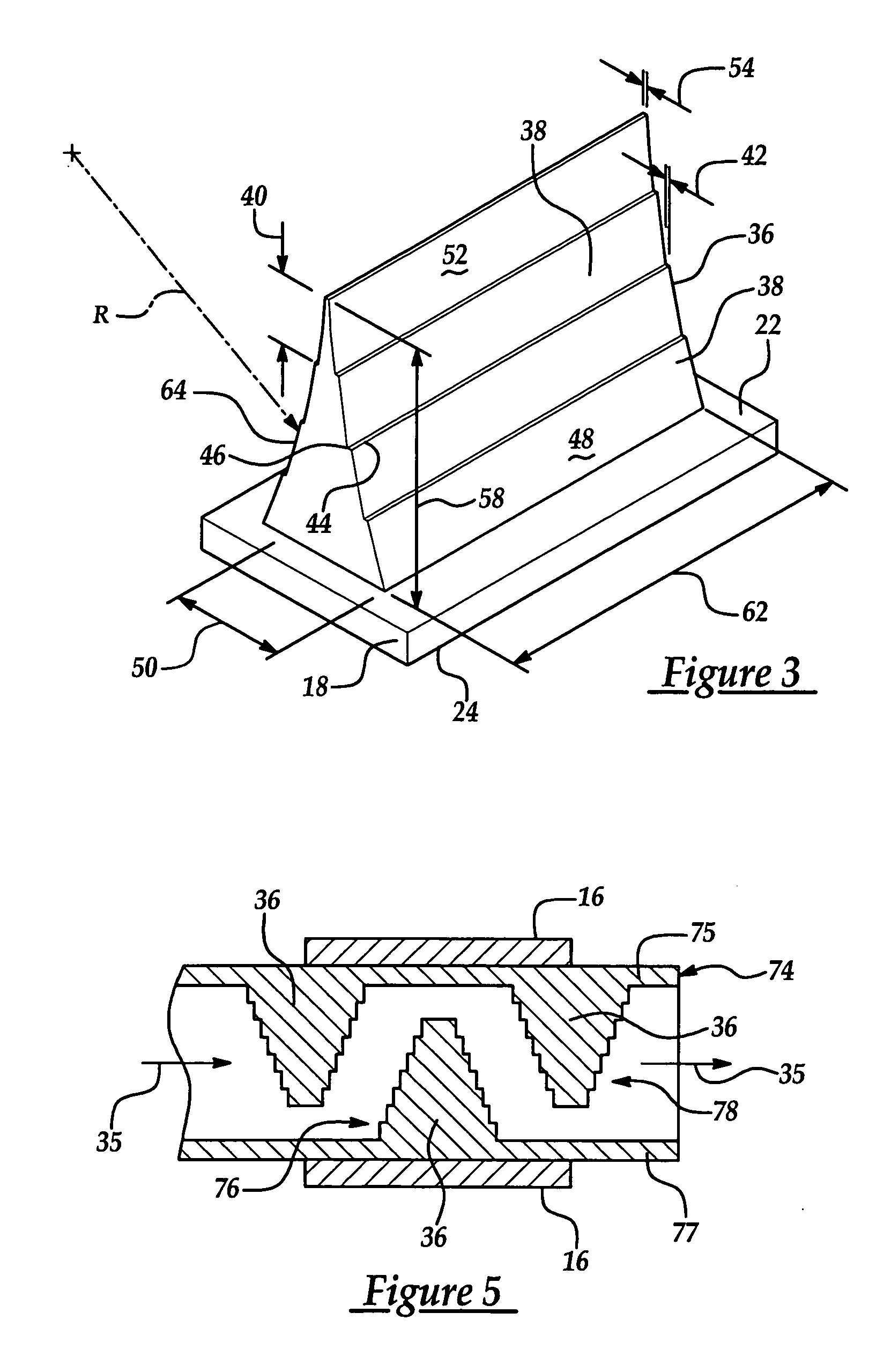Heat dissipation element for cooling electronic devices
a technology of heat dissipation element and electronic device, which is applied in the direction of indirect heat exchanger, laminated element, light and heating apparatus, etc., can solve the problems of significant challenges in the process of optimizing tcu performance, heat dissipation rate, and relatively low heat capacity of air, so as to maximize the amount of heat and dissipate increased amounts of heat
- Summary
- Abstract
- Description
- Claims
- Application Information
AI Technical Summary
Benefits of technology
Problems solved by technology
Method used
Image
Examples
Embodiment Construction
[0020] Referring to the Figures, wherein like numerals indicate like or corresponding parts throughout the several views, a heat dissipation element for cooling an electronic device 16 is shown generally at 18 in FIG. 1. The subject invention is particularly useful with electronic devices 16 (best shown in FIGS. 5 and 7) such as, but not limited to, computer chips, telecommunication chips, microprocessor assemblies, and the like. These electronic devices 16 are used in various systems (not shown), such as computer systems, telecommunication systems, and the like. The electronic devices 16 are preferably flexibly attached to the heat dissipation element 18. However, one skilled in the art may connect the electronic devices 16 by other methods without deviating from the subject invention.
[0021] The heat dissipation element 18 includes a top surface 22 and a bottom surface 24 for mounting thereto the electronic device 16 (FIGS. 4, 5, and 7) to be cooled. The top surface 22 defines a h...
PUM
 Login to View More
Login to View More Abstract
Description
Claims
Application Information
 Login to View More
Login to View More - R&D
- Intellectual Property
- Life Sciences
- Materials
- Tech Scout
- Unparalleled Data Quality
- Higher Quality Content
- 60% Fewer Hallucinations
Browse by: Latest US Patents, China's latest patents, Technical Efficacy Thesaurus, Application Domain, Technology Topic, Popular Technical Reports.
© 2025 PatSnap. All rights reserved.Legal|Privacy policy|Modern Slavery Act Transparency Statement|Sitemap|About US| Contact US: help@patsnap.com



